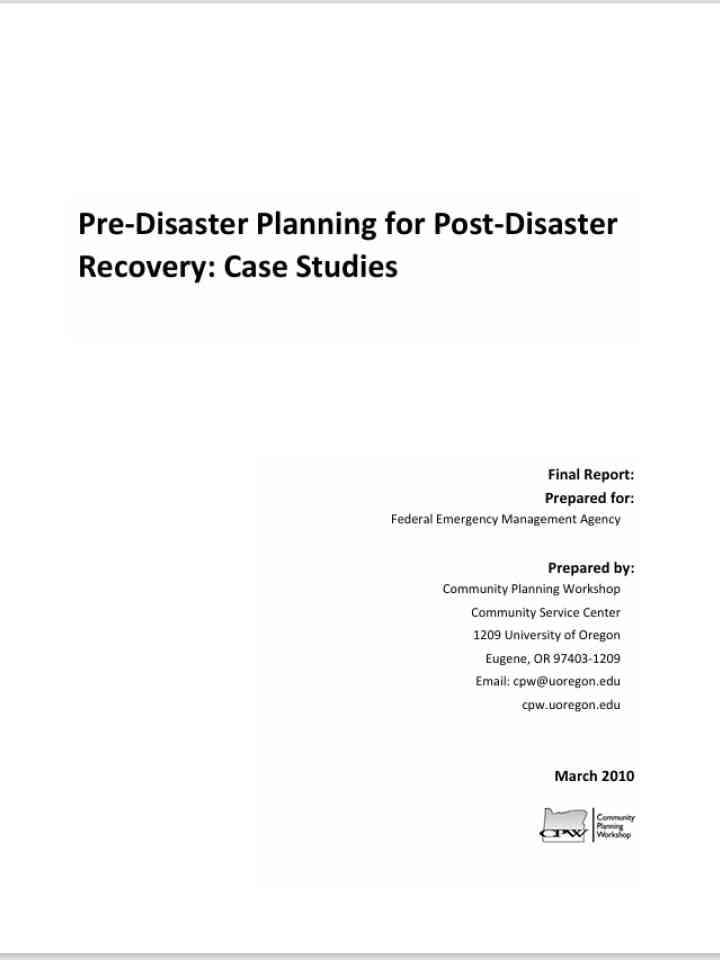Pre‐Disaster Planning for Post‐Disaster Recovery: Case Studies
In coordination with a consultant from the Federal Emergency Management Agency (FEMA), the University of Oregon's Community Planning Workshop (CPW) researched four post‐disaster recovery plans (PDRPs) developed by select communities in the United States. The purpose of this research was to find innovative post‐disaster plans that incorporate effective strategies for recovery with the intent of evaluating strategies for providing credit for such efforts as part of the Community Rating System (CRS). The case studies focus on communities at risk for flooding. While some of these communities participate in the CRS associated with FEMA's National Flood Insurance Program (NFIP), others are not currently participants in this program.
The purpose of this report is to document innovative post‐disaster recovery strategies to provide structure and context for potential inclusion of such efforts as part of the CRS program. Key questions exist about the potential relationship between post‐disaster plans and CRS such as:
- What efforts are worthy of receiving credit?
- Do process‐related steps that involve residents in planning efforts receive credit?
- Is there an ideal framework or form for post‐disaster redevelopment plans? Should they be incorporated into land use plans, building standards, functional plans (e.g., water, wastewater, transportation, emergency management, and parks plans), or some combination thereof?
- What strategies have been effective?
- How have such efforts performed after a disaster?
Explore further
